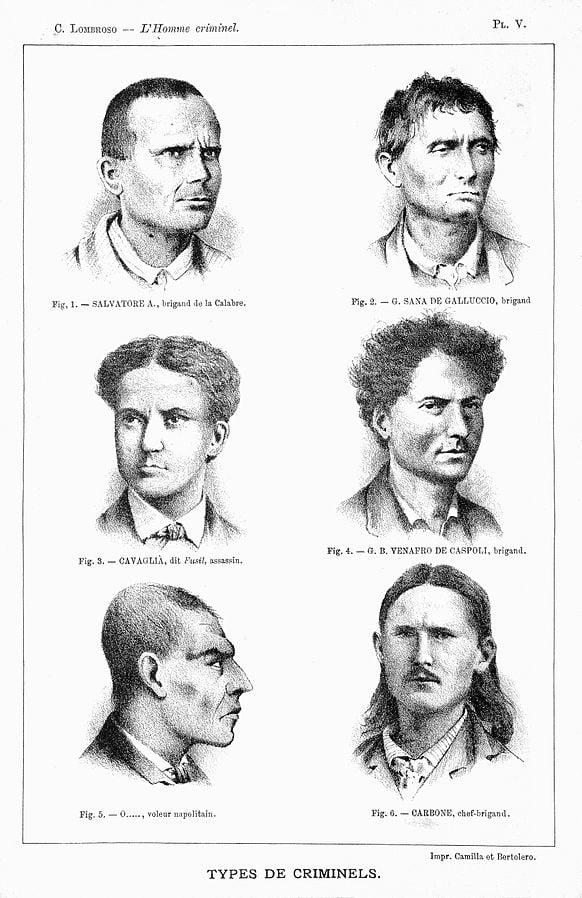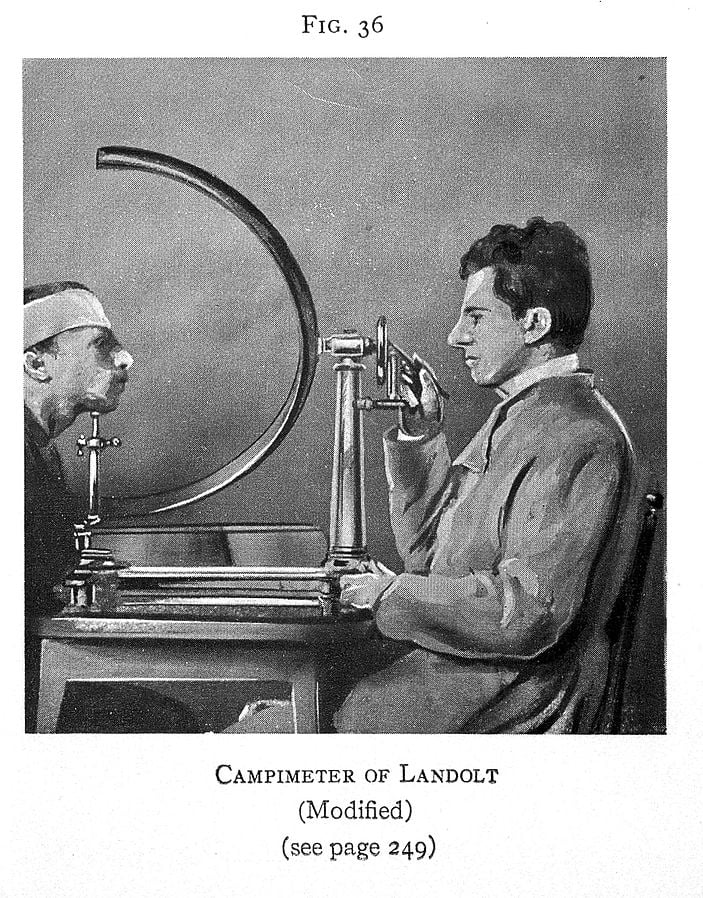Lombroso’s (1876) biological theory of criminology suggests that criminality is inherited and that someone “born criminal” could be identified by the way they look.
In 1876 Lombroso, an Italian criminologist proposed an atavistic form as an explanation for offending behavior. This explanation was focused on the notion that criminals have physical distinguishing features.
In The Criminal Man (“L’Uomo delinquente”), first published in 1876, he suggested that there was distinct biological class of people that were prone to criminality.
These people exhibited ‘atavistic’ (i.e. primitive) features. Atavistic derives from the word “avatus”, which means ancestor in Latin.
These atavistic characteristics, he argued, denoted the fact that the offenders were at a more primitive stage of evolution than non-offenders; they were “genetic throwbacks”.
This made them, according to Lombroso, wilder, untamed and unable to fit in the 1870s society and therefore they would inevitably turn to crime.
This implies that criminality is inherited and that it can be identified by physical defects.

Credit: Wellcome Library, London. Wellcome Images images@wellcome.ac.uk http://wellcomeimages.org Six figures illustrating types of criminals Printed text L’Homme Criminel Lombroso, Cesar Published: 1888
Atavistic Form
- Features of the thief: expressive face, manual dexterity, and small, wandering eyes.
- Features of the murderer: cold, glassy stares, bloodshot eyes, and big hawk-like nose.
- Features of sex offenders: thick lips and protruding ears.
- Features of women offenders: shorter and more wrinkled, darker hair and smaller skulls than ‘normal’ women.
He also claimed the “born criminal” had a liking for tattoos, cruel and wicked games and their own language through a primeval slang (a throwback to their savage ancestry).
Lombroso argued that criminals were not to blame for their criminal activities as their behavior was determined by their physiology.
This theory was influenced by Darwin’s theory of evolution.
(The Origin of the Species was published in 1859)
Measuring Crime: The “Born Criminal”
Lombroso examined over 4000 offenders (living and dead) to identify physical markers indicative of the atavistic form.
Examples of things Lombroso measured were people’s height, weight, the span of their arms, the average height of their body while seated, the sizes of their hands, necks, thighs, legs, and feet, their eye color and so on.
In a study of 383 dead Italian criminals and 3839 living ones he found 40% of them had atavistic characteristics.

Credit: Wellcome Library, London. Wellcome Images images@wellcome.ac.uk http://wellcomeimages.org Algometer Printed text Criminal Man Lombroso, Cesare Published: 1911
Critical Evaluation
- Lombroso became known as the father of modern criminology. He was one of the first to study crime and criminals scientifically, Lombroso’s theory of the born criminal dominated thinking about criminal behavior in the late 19th and early 20th centuries.
- This was an important shift from the thinking which had dominated this field for thousands of years which had analyzed crime on moral and religious terms and therefore crime was not seen as a legitimate topic for scientific study.
- However, the research carried out by Lombroso lacked the rigor we now expect from scientific studies. He did not use a control group against which to compare his participants.
- Furthermore, Lombroso interpreted the presence of some physical characteristics as a cause of offending behavior but it could be argued that these traits might have interacted with social factors.
- According to Agnew (1992), possessing these unpleasant physical characteristics might lead to unpleasant social interactions, this leads to frustration and anger which, in turn, lead to offending behavior.
- Goring (1913) carried out a study comparing over 2000 London convicts with a control group. He failed to replicate Lombroso’s findings.
- Lombroso argued that the physical characteristics he identified were innate but this might not have been the case, they might have been influenced by environmental factors such as poor nutrition in childhood.
- This theory is deterministic as it implies that possessing particular innate physical characteristics is likely to lead to crime. It does not take into account the influence of free will and moral/ religious values. This limits its usefulness as it cannot explain individual differences.
- This explanation is socially sensitive; some of the features described by Lombroso are linked to skin color and other traits are associated with the concept of race, so it has been accused of scientific racism.
- Furthermore, this theory has also been used to support eugenics. Eugenics is a philosophy arguing that those who are born with genetic advantages should be allowed to breed for the good of society but those who are born with genetic disadvantages should be eliminated to improve the genetic quality of the human population.
References
Agnew, R. (1992). Foundation for a general strain theory of crime and delinquency. Criminology, 30(1), 47-88.
Darwin, C. (1859). The origin of species and The descent of man, New York (The Modern Library).
Goring, C. (1913). The English convict: A statistical study. HMS.
Lombroso, C. (1876). L’Uomo delinquente. Milano: Hoepli.

